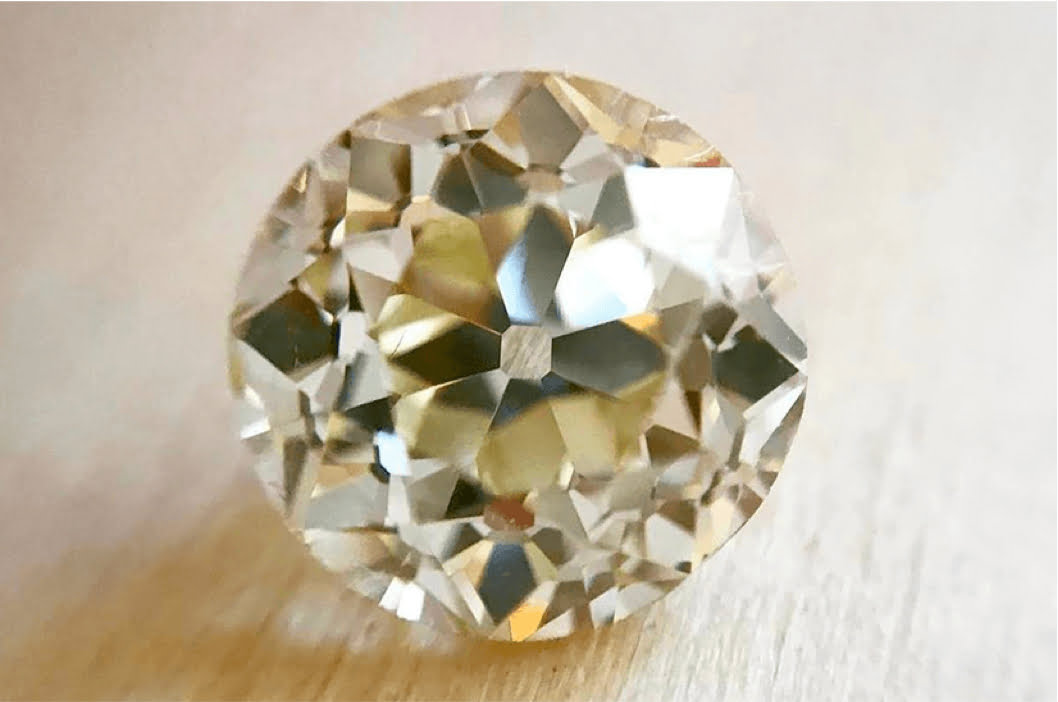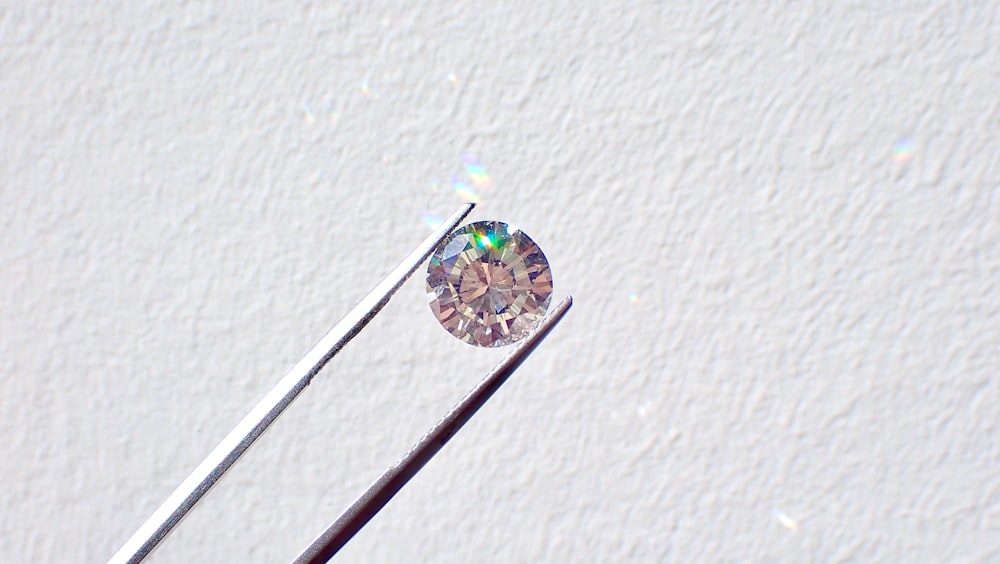The 4Cs of diamonds are cut, color, clarity, and carat. These four elements can tell you quite a lot about a diamond’s appearance and value, so it’s smart to get a basic understanding of them before you buy a diamond.
To help you make an educated decision about the next diamond you buy, we’re going over everything you need to know about the 4Cs of diamonds. We’ll cover the 4Cs in order of how important they are for a diamond’s beauty, starting with the diamond cut.
Cut
Diamond cut is a grading of how well a diamond has been cut into its shape. The way a diamond has been cut greatly affects how it can capture and reflect light. Things like cut proportions and faceting have a tremendous impact on a diamond’s brilliance (white light), fire (rainbow light), and scintillation (light and dark contrast).
Put simply, a diamond cut is the main thing that determines how sparkly a diamond is. Diamonds that are expertly cut will sparkle beautifully, while diamonds that are poorly cut will look dull and dim.
Diamonds can receive one of five cut grades from the GIA. From best to worst, they are Excellent, Very Good, Good, Fair, and Poor. Most jewelers consider diamond cut to be the most important of the 4Cs since this craftsmanship grade has the biggest impact on the way a diamond looks.
It’s usually best to stick with Very Good or Excellent cut diamonds, especially for important pieces like diamond engagement rings. Once you’re in the Good range, diamonds start to look noticeably dull. Diamonds with Fair or Poor cut grades are quite dull and often noticeably asymmetrical.
Note that a diamond cut is not the same thing as a diamond shape, which is the shape a diamond has been cut into. You may see people use the two terms interchangeably, but diamond cut and diamond shape are distinctly different. The diamond shape is a description of a diamond’s overall shape, which could be round, princess cut, cushion cut, and so on. Diamond cut is a grading of how well a diamond was cut into that shape.
Color
Diamond color is a grading of how colorless a diamond is. Color grade measures the absence of color, which is desirable for a colorless diamond (also sometimes called a white diamond). Color grade is only used for colorless diamonds, so it does not apply to colored diamonds or gemstones.
The diamond color scale ranges from D to Z. D-grade diamonds are completely colorless, while Z-grade diamonds will have a noticeable yellow or brownish tint.
The right color grade for you is completely dependent on personal preference. It can also change depending on your jewelry setting. Colorless diamonds reflect what’s around them, including the precious metal they’re set in. This can affect the way a diamond’s color looks–sometimes positively and sometimes negatively.
Generally speaking, most people won’t notice a yellow tint in diamonds with a color grade of H or higher. Still, we recommend looking at diamonds in person to make sure you love the color of your diamond when it is set into your jewelry.

Clarity
Diamond clarity is a grading of how flawless a diamond is, internally and externally. Internal flaws are called inclusions and external flaws are called blemishes.
Diamond clarity grades fall into one of five categories: Flawless (FL, IF), Very Very Slightly Included (VVS1, VVS2), Very Slightly Included (VS1, VS2), Slightly Included (SI1, SI2), or Included (I1, I2, I3). To grade diamond clarity, the grader assesses how flawless the diamond is under different levels of magnification.
Here’s the thing about diamond clarity: you’re not going to be looking at your diamond jewelry under 10x magnification. You’re just going to look at it with your eyes. So, what you want is a diamond that’s eye clean, meaning it has no flaws that are visible to the naked eye. Even diamonds in the Slightly Included range can be eye clean, so you may find you can be very flexible with diamond clarity grade and still end up with a diamond that looks flawless in jewelry.
Carat
Last up, we have the most well-known of the 4Cs: diamond carat. A diamond carat is an objective weight measurement that can give you an idea of how large a diamond is. While carat weight isn’t a size measurement, a diamond carat can give you an idea of how large a diamond is. Larger diamonds will weigh more than smaller diamonds, so they’ll have higher carat weights.
Unless the size of your diamond is your top priority, we generally recommend thinking about what you want for your cut, color, and clarity first. Then, consider the carat weight options within your budget. One of our jewelers can help you explore diamonds with different qualities and carat weights that stay within your budget in order to help you decide what you find most attractive in person.
If the diamond size is your top priority, we still recommend placing a high priority on the diamond cut. The eye perceives brighter things as being bigger, so sparklier diamonds with better cuts will look larger to the naked eye. Another way to maximize size is to choose a diamond shape that has more surface area on its table (its top). Elongated oval cut and emerald cut diamonds look larger per carat than round diamonds.
Beyond the 4Cs of Diamond Quality
While diamond grading reports can tell you a lot about the quality of a diamond, you can’t always tell what a diamond will look like based on its grading report alone. Two diamonds with the same grades can look very different, even when they’re graded by the same laboratory, because there’s room for variation within each grade. Grading reports also don’t note certain things that affect a diamond’s beauty, such as whether or not it’s eye clean.
At the end of the day, you simply cannot capture a diamond’s beauty on a piece of paper. That’s why we never sell our loose diamonds online. Our jewelers handpick every diamond we carry for beauty, not just good grades.
An added advantage of our hand selection process is that we buy premium diamonds before large retailers can, so we can often get them for a much better price. On top of that, our experienced diamond buyers have an eye for diamonds that may have so-so grades, yet are incredibly beautiful to the naked eye. All in all, this allows us–and our customers–to access the best diamonds for excellent prices.

Learn more about our hand-selected diamonds by clicking the link below or stop by our showroom to see them sparkle in person.










